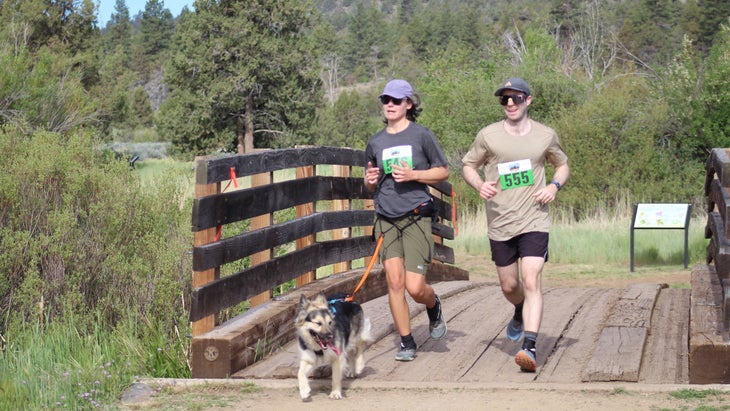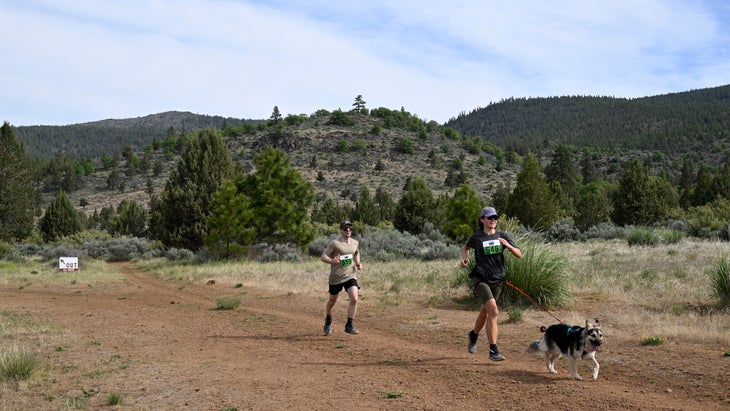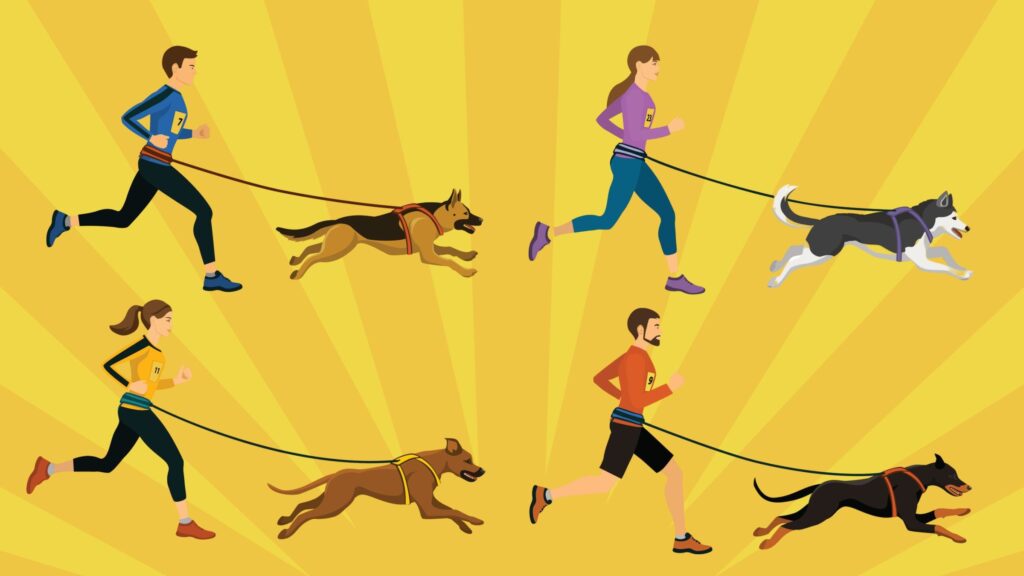I couldn’t fix my dog’s behavior until we started running toward a shared goal—literally
(Photo: Vect0r0vich/Getty, Abigail Wise)
Published August 9, 2025 03:08AM
During the first year of living with Halle—a German shepherd-bordie collie mix adopted at ten months old—I felt like a prisoner to my pet.
When guests came over, she believed it was her duty to drive out the invaders from our house, barking nonstop until they walked out the door. If we left her alone at home, she would panic, pace, and become destructive—I once swiftly returned after seeing her attempting to chew through her wire crate in the doggy viewing camera I’d installed. Outside, Halle screamed and threw her body against the leash when she saw another dog, overcome with strong emotions. She obsessed over rabbits and squirrels, blowing me off to pursue them; she once killed a baby bunny while leashed, snapping it up and shaking it to death before I could say “leave it.”
On the advice of trainers, I shrank our lives. I walked her early in the morning on steep, loose trails that no one else wanted to hike. Friends no longer came over to the house. If we saw a dog while we were out, I would sometimes hide with Halle behind a bush or car. In my quest to calm her down, most of my non-essential income went to trainers. One, after ten lessons with no result, suggested that perhaps some day Halle might simply “grow out of it.”

Today, more than two years after adopting Halle, we are in a better groove. Our communication is clearer, and many of her worst impulses have been tamed. I credit our success to better training advice and discovering canicross.
For those unfamiliar, canicross is the sport of trail running with your dog attached to you—and, ideally, pulling ahead. The dog wears a special harness that allows unfettered movement, which is clipped to a bungee line attached to the human’s running waist belt. Originally an off-season activity for sled dogs, handlers use similar commands to mushers, instructing their dogs to “hike” and “gee” and “haw”—AKA hurry up, go right, and go left. In recent years, the sport has taken on a life of its own, with national organizations, local groups, and races.
For Halle and me, it started as a bit of an accident. Tired of being dragged by her on our pre-dawn hikes, I made a knot in her 15-foot leash, clipped it around my waist, and ran a three-mile loop on the trails (note that I do not recommend this sketchy setup). For once, her frantic behavior was not a problem—instead, her pulling made my uphills a little easier.
Later that day, I took her on a walk through a busy park on the same long leash. She didn’t bark or lunge at the dogs; she seemed more interested in exploring and sniffing. Maybe the run removed some of her pent-up frustration.
So much of what we ask of pet dogs is in conflict with their instincts and desires. For instance: walking by our sides. Many dogs naturally walk faster than us—meeting our pace probably feels like getting stuck behind a slow driver in the left lane. Dogs want to explore, sniff, and run in their limited time outside, and walks on a short leash can’t satisfy those needs.
Of course, dogs still have to fit into our world—learning to walk nicely on a leash, come when called, potty outside, and otherwise behave are essential to living harmoniously with humans. But when dogs don’t have outlets for their natural behaviors, owners sometimes find themselves playing dog training whack-a-mole, engaged in a never-ending battle to stop problematic barking, pulling, jumping, and digging.
That’s why having a mutually enjoyable activity is so important. A shared sport bolsters the canine-human relationship, which in turn makes it easier to do necessary-but-less-fun training.
By allowing Halle to run full-steam ahead, we finally had a shared purpose: shredding the trails. I found an online class on pulling sports and ordered proper equipment. Halle learned commands for walking to the end of the leash, speeding up, slowing down, left turns, and right turns.
I taught her that sudden sniff stops were a no-no, as was dragging me down loose slopes, but those rules came relatively easily just like how we humans accept rules in sports and board games.

Outside of canicross, we also focused on life skills, teaching a reliable “come” and “heel,” and practicing around dogs, squirrels, and other distractions. We used play to build impulse control, too, progressively strengthening her “drop it,” “wait,” and other commands around toys she was eager to chase.
Last fall, I met with another Reno canicross runner and her dog, and saw how all the running and training had paid off. I was nervous ahead of the run with Halle’s history of unruly and explosive behavior around dogs.
We started the run behind the other team. Halle was amped to see another dog, but she channelled her energy into pulling me up a switchback. Within 20 minutes, we were jogging and hiking close enough to have a conversation. Halle looked unsure around the new dog, but also glanced backward with worry when we lost sight of them after turning a corner—she seemed to realize we were a group and wanted to stick together. She made more progress over a one-hour run than she had over multiple training sessions with a trainer’s dog. She and Chase, the husky-pitbull mix, are now good friends.
In April, we entered our first race together in Susanville, California. Halle hunched nervously between the runners as we were crammed together at the start line. But once we started running, she was on fire. I flew the first two miles as she threw her weight into the harness—race volunteers joked that I was cheating (it was a dog-friendly race, but not explicitly canicross). She galloped past distractions she’d never encountered before, including photographers and volunteers ringing bells. After missing an unlabelled turn, we ended up running an extra mile and a half, but she was a better sport about it than me. She got her second wind after seeing a squirrel at mile five, giving me a much-needed boost.
After the race, we basked in our accomplishment. We might have botched the actual course, but we had cleared a hurdle in a larger race. In a new place amid crowds, our teamwork had shone through, and we ran together without a hitch.
Now, I’m organizing group runs in my area to build more interest in the sport. Maybe other people struggling with their pups can realize the potential and teamwork that canicross brings about.


